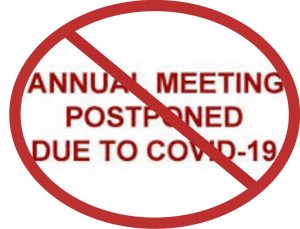 July 2020
July 2020
Meeting are a great way to conduct condo business while socializing. Perhaps this explains why so many meetings – annual general meetings along with board and committee meetings – were cancelled or postponed because of COVID-related restrictions on gatherings.
The business of condo management does not stop because of COVID. Ensuring things continue to function requires meetings to both plan and make decisions. Failure to meet soon leads to undesirable consequences.
At one time there may have been no alternative to postponing meetings. Today, virtual meetings are easy, low cost, potentially more productive and in some ways better than face-to-face meetings. There is no longer a need to cancel meetings when attendees are unable to gather in a room.
Assuming all involved in a meeting or gathering have both internet access and an electronic device such as a computer, laptop, tablet or smartphone, here is how a virtual annual general meeting would work.
- Residents are informed of the meeting via e-mail which includes a link they click on at the designated date and time. The e-mail would include documents or other information relating to matters to be addressed at the meeting.
- A moderator would manage the meeting electronically. Typically, all microphones are automatically turned off. The moderator would activate the microphone for whoever is to speak at the meeting. As one speaker is finished their microphone is turned off and another is activated.
- As the meeting progresses attendees may have questions. They can submit them using a chat box. At appropriate intervals the moderator would read questions that are answered by a designated speaker. One advantage of this approach is that no single individual can dominate questioning, interrupt speakers or disrupt the meeting.
- Electronic voting software, if utilized, allows those qualified to vote to submit their ballot prior, during or after the meeting. Allowing votes for up to 30 minutes after the meeting has ended provides attendees with time to digest what occurred at the meeting. Results are immediately available without requiring a manual count of ballots or review of questionable ballots.
- For matters not requiring a vote but where attendee input is desired, survey software allows residents to provide input at any time before, during or after a meeting.
Board and committee meetings, having fewer attendees, would operate differently. All participants would be visible to all others and all microphones would remain active.
Virtual meetings are one COVID-inspired practice that can be embraced year-round.








